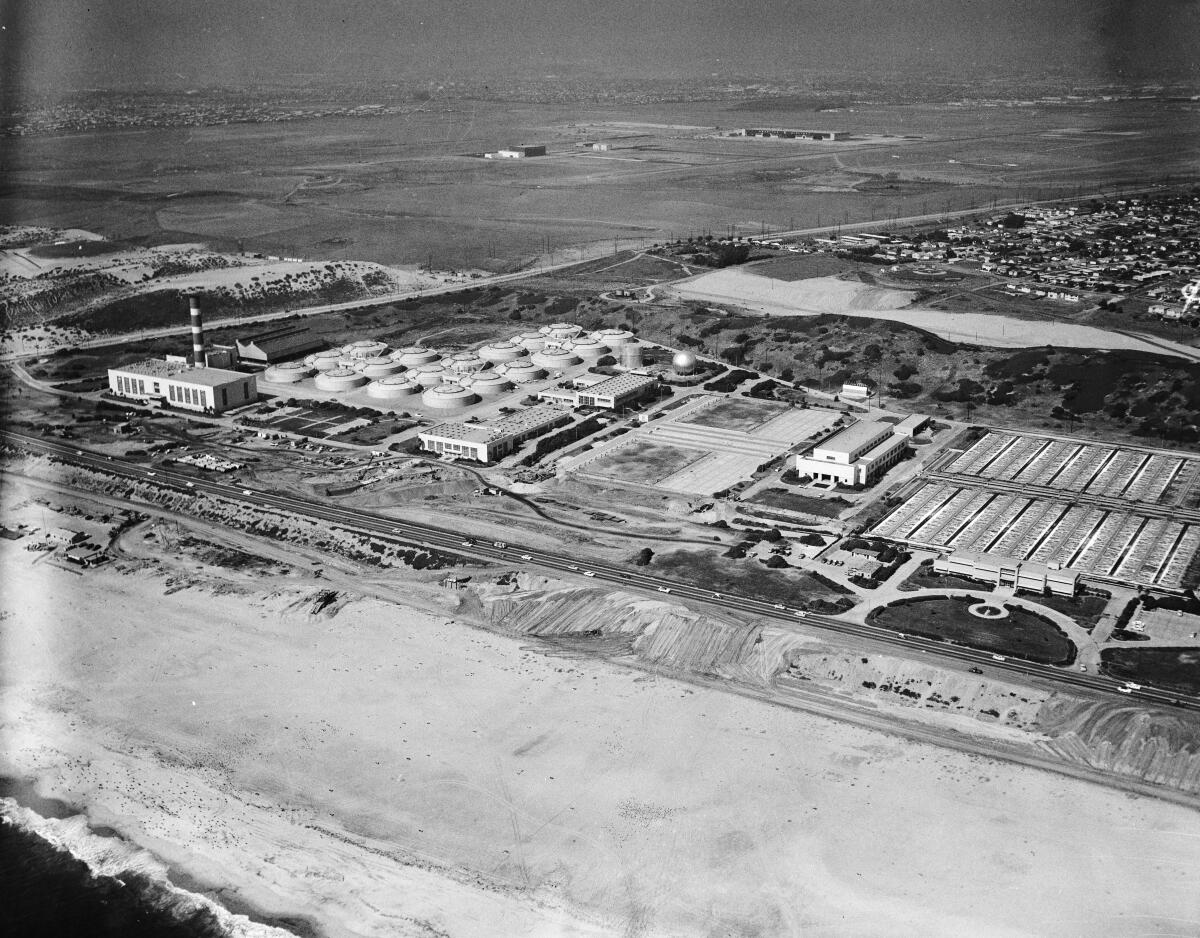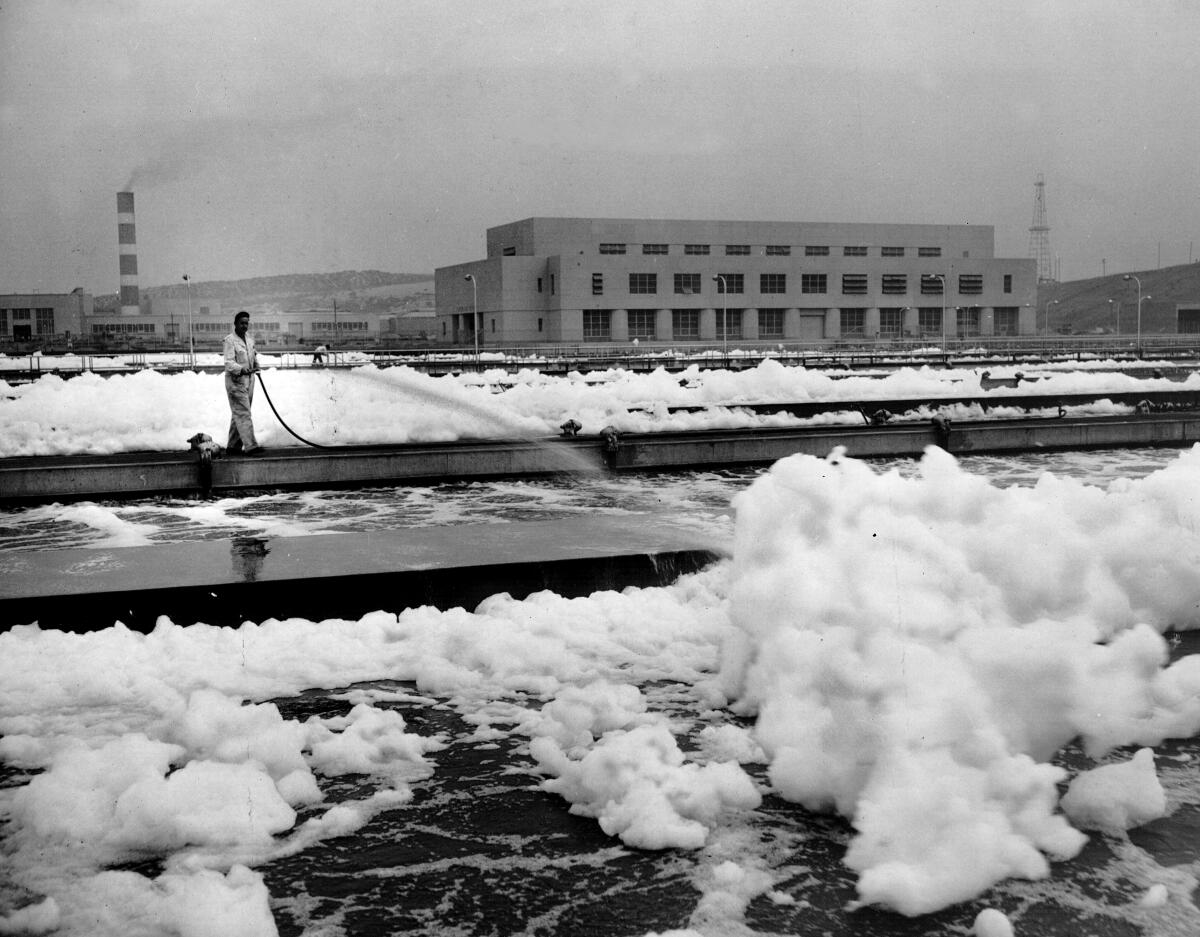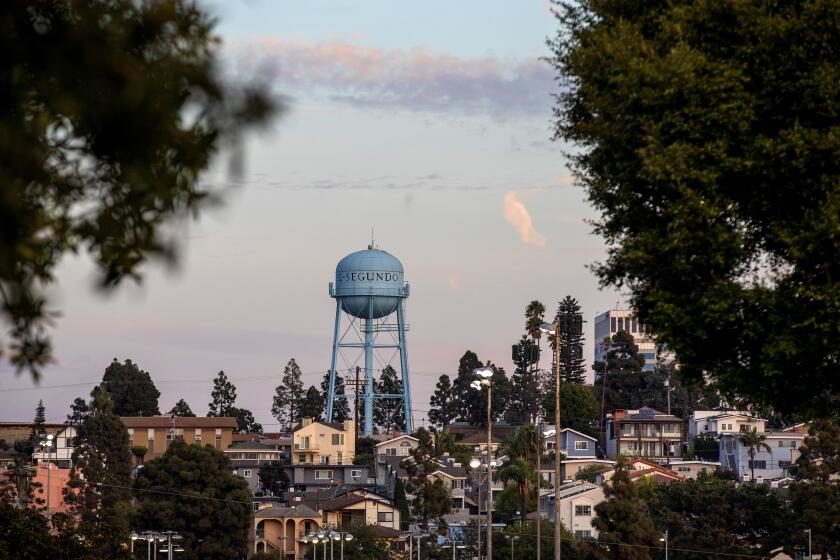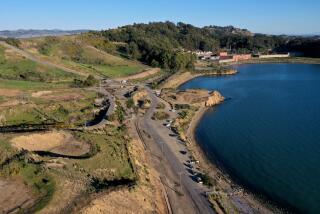How El Segundo fought a Black beach resort a century ago

- Share via
Nearly a century ago, Los Angeles leaders offered beachfront property to a prominent Black entrepreneur, Titus Alexander, to build a retreat for the city’s fast-growing African American population.
Alexander envisioned opening a Black “amusement resort” on a coastal stretch near the southern tip of present-day Dockweiler State Beach, near the city of El Segundo.
Los Angeles initially agreed in 1923 to lease 200 feet of city-owned beach to Alexander for 15 years. The land was part of a tract that the city purchased in 1892 for the Hyperion Water Reclamation Plant, which remains the city’s primary sewage treatment facility.
El Segundo residents were outraged. City leaders enlisted Hermosa Beach, Redondo Beach and L.A. businessmen to wage a bitter 18-month campaign that included petition drives, a lawsuit and racist smears. In 1924, a judge issued a restraining order, temporarily blocking the lease and demanding the L.A. mayor and council members testify why the project should go forward.
Bowing to pressure, L.A. officials backed out of the lease arrangement with Alexander.
“This was another situation where African Americans were foiled,” said Black historian Alison Rose Jefferson.
The film, which grew out of Black Lives Matter protests last summer, shines a light on the coastal community’s intolerant past
Alexander’s story has come to light as El Segundo reckons with its history of racism. In May, the city’s Diversity, Equity and Inclusion Committee recommended a review of El Segundo’s troubled past.
In 1924, officials in neighboring Manhattan Beach confiscated beachfront property where Willa Bruce had operated a popular hotel, restaurant and dance hall for Black families. Manhattan Beach used eminent domain to condemn and seize more than two dozen properties, claiming an urgent need for a public park. Black families who lived around Bruce’s Beach were forced to scatter.
In 1926, the Black-owned Pacific Beach Club in Huntington Beach mysteriously burned to the ground on the eve of its opening.
There was a surge in Ku Klux Klan activity and racism in the 1920s as L.A.’s Black community became more established.
Southerners had been moving to Southern California for job opportunities, and the Black population exploded. At the dawn of the 20th century, Los Angeles had 2,131 Black residents. By 1920, there were 15,579. Many were drawn to California because of anti-discrimination laws, the ability to own property and “because the discrimination was a little less offensive than it was in other places in the U.S.,” Jefferson said.
Central Avenue was a bustling business district, and prosperity seemed within reach, Jefferson said.
In the early 20th century, Alexander was a towering figure in Los Angeles.
The Arkansas native, who moved to L.A. in 1897, was a lawyer, the honorary captain of the L.A. Fire Department and an executive at L.A.’s Bureau of Power and Light, said Robin Miskolcze, a Loyola Marymount University English professor who has been studying the history of El Segundo.
Alexander provided leadership during the 1932 Summer Olympics in Los Angeles by helping coordinate events. Later that year, Alexander was honored by the L.A. Chamber of Commerce for his role in “making comfortable all colored athletes who participated in the Olympic Games,” according to a 1932 article in The Times. He ran unsuccessfully for the L.A. City Council and for a California Assembly seat.
“He was a mover and a shaker,” Jefferson said. “He was involved in real estate ventures and he was civically active. He attempted to get more rights, and less discrimination, for African Americans in the city.”
His proposed resort also could have been a lucrative business venture. (The city of Los Angeles agreed to lease Alexander the land for about $500 a year.) Around this time, the Bruce family’s operation in Manhattan Beach was thriving, said Jefferson, author of the 2020 book “Living the California Dream: African American Leisure Sites During the Jim Crow Era.”
But El Segundo residents would have no part of Alexander’s plans.
Like some other Southern California communities, real estate covenants prevented Black people from owning property in El Segundo. Newspaper articles from the 1920s describe minstrel shows and Klan cross burnings on the coastal bluffs.
On Oct. 26, 1923, the El Segundo Herald published a front-page story, which began: “Titus Alexander, the gum-shoe Negro whose activities for the ‘elevation’ of his race by having them bathe in the sea water lapping El Segundo’s beautiful beach is likely to have his idea ... rudely shattered.”
El Segundo’s city leaders had sent word to their counterparts in Los Angeles that a Black resort “would prove dangerous to the life and property of a large portion of the public,” the article read. A Pacific Electric trolley stop was nearby. “Many of the [trolley] patrons are women and children, and it is not considered desirable” for such a resort to operate there, the Herald article read.
Manhattan Beach won’t apologize for running Black property owners out of town 100 years ago, but a county official seeks to make restitution.
Miskolcze noted the property offered to Alexander wasn’t the finest stretch of beach around. It was next to the Hyperion sewage plant, and in the early 1920s the city dumped raw sewage into the ocean.
“This section of beach would have been laden with human waste,” said Mickolcze, who is white and a member of Sweat Equity Alliance or SEA Change, an activist group formed this spring to lobby for increased diversity and inclusion in El Segundo.
But in the 1920s, the public was not as concerned about environmental health hazards as it is now, Jefferson said. She noted that several beach communities, including Manhattan Beach and Santa Monica, released untreated waste into the sea.

Opponents of Alexander’s proposed resort mounted a “Save the Beaches” campaign, according to a 1925 article in The Times.
The article quoted Arthur Eckman, who was a leader of the lawsuit to prevent the city from leasing the land to Alexander.
“Contrary to the belief of some, this movement of ours is not a movement against the colored or any other race, but it is simply a movement to keep the municipally owned beaches open and free to all the public,” Eckman said. “We hope to have such beaches placed in the hands of the recreation department of the city.”
Staff researcher Julia Franco contributed to this report.
More to Read
Inside the business of entertainment
The Wide Shot brings you news, analysis and insights on everything from streaming wars to production — and what it all means for the future.
You may occasionally receive promotional content from the Los Angeles Times.













